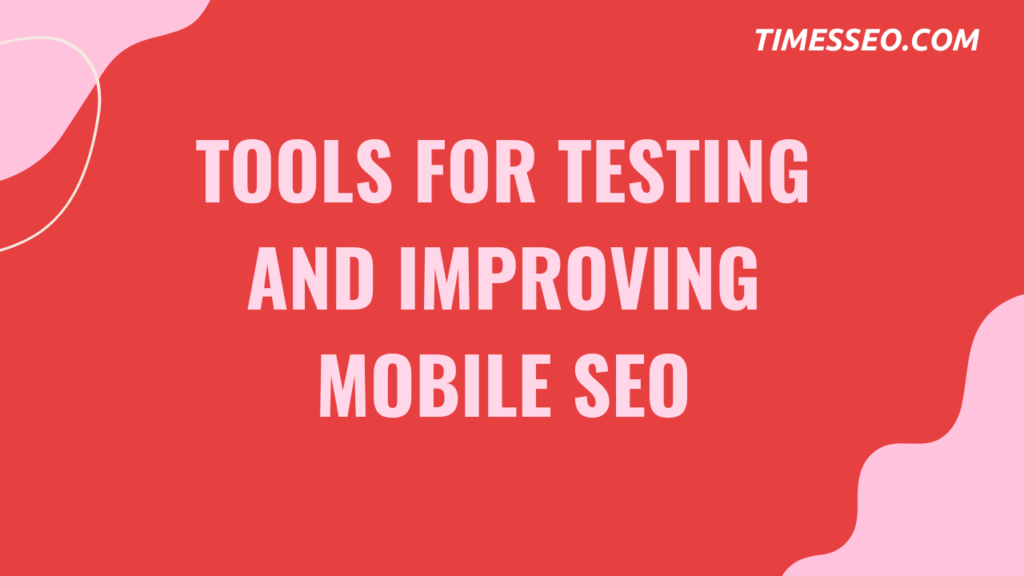
The Importance of Mobile Optimization in SEO Strategy for Businesses
Discover why mobile optimization is a game-changer in today’s digital landscape. This blog post explores the critical role mobile-friendly design plays in improving rankings, user experience, and conversions as part of an effective SEO strategy for businesses. Stay ahead in search results by making your site mobile-first.
Table of Contents
Introduction
What is Mobile Optimization?
Mobile optimization means designing your website so it functions perfectly on smartphones and tablets. A seamless user experience catered to mobile behavior is more important than simply making a website smaller to fit on a small screen.
Why Mobile Optimization is a Non-Negotiable in 2025
We live our lives on our phones, let’s face it. Whether it’s shopping, booking, reading, or Googling, mobile is king. In 2025, if your website isn’t optimized for mobile, you’re not even in the race. It’s not just a trend anymore; it’s a survival strategy.
The Rise of Mobile-First Users
Mobile Usage Statistics You Can’t Ignore
- Mobile devices account for more than 65% of all web traffic worldwide.
- Within an hour, 70% of mobile searches result in action.
- According to 57% of consumers, they won’t suggest a company whose mobile website is badly developed.
How Is It Operated?
People browse differently on phones. They’re on the go, multitasking, and looking for quick answers. A slow, clunky site just won’t cut it anymore.
Key Benefits of Mobile Optimization
Enhanced User Experience
Users stay longer when your site works smoothly on their phones. To keep them interested, navigation, design, and speed are essential.
Reduced Bounce Rates
A mobile-optimized site means fewer people will hit “back” because they couldn’t read your text or click a button.
Faster Load Times
Mobile users are impatient. If your site loads in more than 3 seconds, nearly 40% of users will bounce.
Improved Conversion Rates
A clean, fast, and responsive mobile design encourages users to buy, sign up, or contact you. That’s the end goal, right?
Google’s Mobile-First Indexing
What is Mobile-First Indexing?
Google now primarily uses the mobile version of your site for indexing and ranking. If your desktop version is flawless but your mobile version is trash — guess what Google looks at? The trash.
How It Affects Your Website Ranking
If your mobile site is poor, it will affect your rankings. Mobile-friendliness, page speed, and responsive design are all part of Google’s ranking factors.
SEO Elements Affected by Mobile Optimization
Page Speed and Core Web Vitals
Google uses Core Web Vitals to assess your page’s health. Slow mobile speed? That’s a red flag.
Responsive Design and Viewport Configuration
When you use responsive design, your layout automatically changes to fit various screen sizes. Viewport tags ensure the browser renders your page correctly.
Mobile-Friendly Content Structure
Big blocks of text? No thanks. Use short paragraphs, bullet points, and readable fonts.
Image and Video Optimization for Mobile
Compress images and use adaptive formats. Auto-playing videos with sound? That’s a no-no.
Common Mistakes in Mobile SEO
Blocked Resources
Don’t block important JavaScript, CSS, or images. Googlebot needs access to render your site properly.
Poor Touch Elements
Buttons and links that are too small or too close together are frustrating. Make sure they’re easy to tap.
Intrusive Popups
Popups that block content annoy users and get penalized by Google. Use them sparingly and smartly.
Ignoring Local SEO
Mobile searches often include “near me.” If your business isn’t optimized for local search, you’re missing out on tons of foot traffic.
Mobile Optimization Best Practices
Use Responsive Design
This is non-negotiable. Don’t use separate mobile URLs. One design that adjusts for all devices is the way to go.
Prioritize Mobile Page Speed
Use tools like Google PageSpeed Insights to detect slowdowns. Compress files, enable caching, and use a CDN.
Optimize Fonts and Button Sizes
Choose readable fonts and keep your buttons large enough for fat thumbs. No one wants to zoom in to click.
Test Mobile Usability Regularly
Things break. Regularly test with real devices and tools like Google Search Console for mobile usability issues.
Tools for Testing and Improving Mobile SEO
Google Mobile-Friendly Test
This free tool shows if your site passes the basic mobile-friendliness test.
PageSpeed Insights
It analyzes your mobile page speed and offers actionable fixes.
Lighthouse
A performance and SEO audit tool built into Chrome. Very handy.
Screaming Frog Mobile Crawler
Perfect for crawling your site like Google’s mobile bot would.
Case Studies: Businesses That Boosted SEO Through Mobile Optimization
- A local bakery increased orders by 42% after making their site responsive.
- An eCommerce brand cut bounce rates in half after compressing mobile images and speeding up mobile load times.
- A law firm doubled their leads after optimizing button sizes and contact forms for mobile.
Mobile optimization isn’t fluff — it’s ROI.
The Future of Mobile SEO
AI and Voice Search in Mobile
Voice assistants are becoming a major part of mobile behavior. Optimize for natural language and conversational keywords.
Mobile-First Commerce (M-commerce)
With smartphones becoming virtual malls, ensure your checkout process is mobile-friendly and frictionless.
Conclusion
In 2025 and beyond, mobile optimization isn’t just part of SEO — it is SEO. If your business wants to stay competitive, your site needs to load fast, look great, and function flawlessly on mobile devices. Every touchpoint, every scroll, every click matters when it comes to turning visitors into customers. Don’t let a poor mobile experience drag your SEO (and revenue) down.
Start optimizing today. Because mobile users aren’t waiting.
Frequently Asked Questions
Because most local searches happen on phones. If your mobile site sucks, customers will skip you for a competitor who’s easier to browse on mobile.
At least once a quarter. And after every major update or redesign.
Absolutely. Google prioritizes mobile-friendly sites in local search results.
You can, but you shouldn’t. Responsive design is more scalable, SEO-friendly, and easier to maintain.
Mobile-friendly means the site works on mobile; mobile-optimized means the site is designed specifically for mobile. Always aim for optimized.
Table of Contents
Popular Posts
-
 Affordable Technical SEO Audit for Small Business: A Complete Guide26 Jun 2025 Blog
Affordable Technical SEO Audit for Small Business: A Complete Guide26 Jun 2025 Blog -
 How to Get an Affordable Technical SEO Audit for Small Business27 Jun 2025 Blog
How to Get an Affordable Technical SEO Audit for Small Business27 Jun 2025 Blog -
 The Ultimate Local SEO Audit Checklist for Startups28 Jun 2025 Blog
The Ultimate Local SEO Audit Checklist for Startups28 Jun 2025 Blog -
 Local SEO Audit Checklist for Startups: A Beginner’s Guide28 Jun 2025 Blog
Local SEO Audit Checklist for Startups: A Beginner’s Guide28 Jun 2025 Blog -
 Top On-Page SEO Audit Steps for Service Websites Every Business Should Know29 Jun 2025 Blog
Top On-Page SEO Audit Steps for Service Websites Every Business Should Know29 Jun 2025 Blog -
 Technical SEO for WordPress: The Ultimate Beginner’s Guide01 Jul 2025 Blog
Technical SEO for WordPress: The Ultimate Beginner’s Guide01 Jul 2025 Blog -
 The Impact of On-Page SEO Audit Steps for Service Websites on UX01 Jul 2025 Blog
The Impact of On-Page SEO Audit Steps for Service Websites on UX01 Jul 2025 Blog -
 Technical Mobile SEO Audit Tips for Developers02 Jul 2025 Blog
Technical Mobile SEO Audit Tips for Developers02 Jul 2025 Blog -
 Complete SEO Backlink Audit Guide for Better Google Rankings03 Jul 2025 Blog
Complete SEO Backlink Audit Guide for Better Google Rankings03 Jul 2025 Blog -
 Boost Your Rankings with Technical SEO for WordPress01 Jul 2025 Blog
Boost Your Rankings with Technical SEO for WordPress01 Jul 2025 Blog






